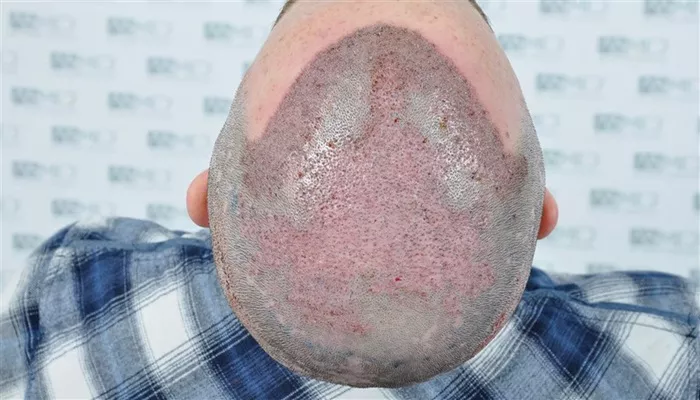Undergoing a hair transplant is a significant step towards achieving a fuller, natural-looking head of hair. However, one common concern that patients face following the procedure is facial swelling. Swelling can be a normal part of the healing process, but managing it effectively is crucial for a smooth recovery. This article will provide a comprehensive guide on how to reduce face swelling after a hair transplant.
Understanding Face Swelling After Hair Transplant
Swelling after a hair transplant is a common phenomenon. It occurs due to the body’s natural response to the surgical procedure. When hair follicles are transplanted, they can cause localized trauma, which leads to inflammation and swelling. This response is usually temporary and should subside as healing progresses.
Causes of Face Swelling
Surgical Trauma: The process of extracting and implanting hair follicles can cause bruising and inflammation in the surrounding areas.
Increased Blood Flow: The body’s response to surgery includes increased blood flow to the affected area, which can contribute to swelling.
Fluid Retention: Post-operative fluid retention in the tissues can lead to puffiness and swelling around the face.
Immediate Steps to Manage Swelling
Taking immediate action to manage swelling can make a significant difference in your recovery experience. Here are some essential steps to follow:
1. Apply Cold Compresses
Using cold compresses can help reduce swelling effectively. Cold temperatures constrict blood vessels and minimize inflammation.
How to Apply: Wrap ice packs or a cold compress in a clean cloth. Apply gently to the swollen areas of your face for 15-20 minutes at a time.
Frequency: Repeat the process every 2-3 hours during the first 48 hours after the procedure.
2. Keep Your Head Elevated
Maintaining an elevated position while resting can help reduce swelling.
Sleeping Position: Sleep with your head raised on 2-3 pillows or a wedge pillow. This elevation helps prevent fluid accumulation in the face.
Daytime Position: When sitting or lying down during the day, try to keep your head elevated as much as possible.
3. Stay Hydrated
Proper hydration aids in reducing swelling and supports the healing process.
Drink Water: Consume plenty of water throughout the day. Aim for at least 8-10 glasses of water daily.
Avoid Excessive Sodium: Limit your intake of salty foods, as sodium can contribute to fluid retention and swelling.
Medication and Medical Advice
Following your surgeon’s advice regarding medications is crucial for managing swelling and promoting healing.
1. Anti-Inflammatory Medications
Your surgeon may prescribe or recommend over-the-counter anti-inflammatory medications to help control swelling.
Types of Medications: Common medications include ibuprofen or aspirin. Always follow the dosage instructions provided by your healthcare provider.
Consult Your Doctor: Before taking any medication, consult your surgeon to ensure it is safe and appropriate for your situation.
2. Steroid Injections
In some cases, your surgeon might suggest steroid injections to reduce significant swelling.
How They Work: Steroids are powerful anti-inflammatory agents that can quickly reduce swelling and inflammation.
Frequency: These injections are typically used in more severe cases and are administered by a medical professional.
SEE ALSO: Is It Okay to Scratch Your Scalp After a Hair Transplant?
Dietary Considerations
What you eat can impact the level of swelling you experience after your hair transplant.
1. Eat Anti-Inflammatory Foods
Incorporate foods with anti-inflammatory properties into your diet to support healing and reduce swelling.
Examples: Include foods like berries, leafy greens, nuts, and fatty fish in your meals.
Avoid Inflammatory Foods: Reduce consumption of processed foods, sugary items, and excessive carbohydrates.
2. Avoid Alcohol
Alcohol can contribute to dehydration and may exacerbate swelling.
Moderation: If you drink alcohol, do so in moderation and avoid it for at least the first week after the procedure.
Impact on Healing: Alcohol can also interfere with your body’s healing process and may affect the effectiveness of medications.
Lifestyle Adjustments
Certain lifestyle changes can help manage and reduce swelling post-procedure.
1. Avoid Strenuous Activities
Engaging in heavy exercise or strenuous activities can increase blood flow and exacerbate swelling.
Rest and Recovery: Focus on gentle activities and avoid any strenuous exercise for at least two weeks after the procedure.
Gradual Return: Gradually resume physical activities as advised by your surgeon.
2. Follow Post-Operative Care Instructions
Adhering to your surgeon’s post-operative care instructions is essential for a smooth recovery.
Guidelines: Follow all recommendations regarding wound care, medication, and activity restrictions.
Scheduled Follow-Ups: Attend all follow-up appointments to ensure proper healing and address any concerns.
Long-Term Strategies for Swelling Reduction
Managing swelling is not just about immediate actions but also long-term care and monitoring.
1. Monitor for Complications
While swelling is common, it’s important to monitor for signs of complications that may require medical attention.
Signs to Watch For: Excessive swelling, severe pain, or signs of infection (e.g., fever, redness) should be reported to your healthcare provider.
Early Intervention: Address any unusual symptoms promptly to prevent potential complications.
2. Maintain a Healthy Lifestyle
A healthy lifestyle supports overall well-being and can positively impact recovery.
Balanced Diet: Continue eating a balanced diet rich in vitamins and minerals.
Regular Exercise: Once cleared by your surgeon, engage in regular, moderate exercise to support circulation and overall health.
Conclusion
Reducing facial swelling after a hair transplant involves a combination of immediate and long-term strategies. By applying cold compresses, keeping your head elevated, staying hydrated, and following medical advice, you can manage swelling effectively and support a smooth recovery process. Remember to adhere to your surgeon’s post-operative care instructions and monitor for any unusual symptoms. A thoughtful approach to recovery will help you achieve the best results from your hair transplant procedure.

